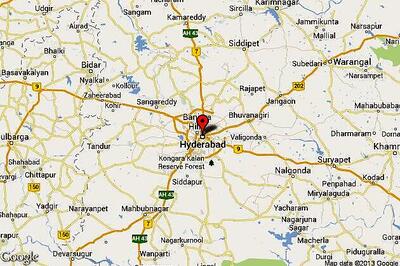
views
Rishi Sunak’s tenure as Britain’s Prime Minister ended on Friday after the Keir Starmer-led Labour Party routed his party in the general election. Sunak conceded defeat to the main opposition party, saying, “I take responsibility for the loss”.
“Today, power will change hands in a peaceful and orderly manner with goodwill on all sides,” said Sunak, as his Conservative party appeared to be heading for a historic defeat to Labour. Though Sunak managed to get reelected in his northern English seat, his party faced a “bloodbath” in the election, with a record number of Cabinet ministers losing their seats.
Throughout his political career, Sunak has portrayed himself as thorough and evidence-led. However, critics argue that he lacked the instinctive political touch seen in his predecessors, such as Tony Blair and Boris Johnson. This deficiency of the British Indian PM was underlined during the campaign period, where several missteps marred his leadership.
Leadership and Legacy
Sunak’s rise to the premiership in October 2022 marked him as Britain’s first leader of colour and the first Hindu to hold the position. At just 42 years old, he was also the youngest leader in over 200 years. His swift ascent from Treasury chief to Prime Minister came amid internal party turmoil following the resignation of Boris Johnson and the short-lived leadership of Liz Truss.
Working-Class Contempt
Sunak and his wife, Akshata Narayana Murty — often seen wearing expensive clothing and other lavish attire — alienated working-class people in the country. With an estimated fortune of 651 million pounds, the couple are the wealthiest inhabitants yet of No. 10 Downing Street. They’re even richer than King Charles III, a level of wealth that Labour leader Starmer said made Sunak out of touch with the everyday realities and struggles of working people.
With his fortune secure, Sunak was elected to Parliament for the safe Tory seat of Richmond in Yorkshire in 2015. In Britain’s 2016 Brexit referendum, he supported leaving the European Union. When “leave” unexpectedly won, Sunak enjoyed a meteoric rise that swiftly led him to Downing Street.
Policy and Other Divisions
As Prime Minister, Sunak faced challenges in unifying the Conservative Party on key economic policies. His tenure was marked by debates over the direction of fiscal policy, with one faction advocating for tougher immigration measures and lower taxes, while others pushed for a more centrist approach to appeal to broader electorate bases.
Sunak’s commitment to lower taxes and a smaller state aligned with his admiration for former Prime Minister Margaret Thatcher’s policies but clashed with the party’s broader electoral strategy. His handling of the COVID-19 economic response, including the job retention package, was praised for its impact on saving jobs but increased the country’s tax burden significantly. The legacy of his leadership will be defined by how history judges his economic stewardship and his ability to navigate internal party divisions.
Campaign Missteps
Sunak’s campaign faced challenges from the outset, starting with the controversy surrounding candidate suspensions due to a scandal involving betting on the election date. The decision to suspend these candidates came under fire after pressure from Labour leader Starmer, raising questions about Sunak’s handling of internal party issues.
Another misstep was Sunak’s early departure from the 80-year D-Day commemorations in northern France, which drew criticism for showing disrespect to veterans and diminishing the UK’s international standing. This incident, where world leaders including President Joe Biden and French President Emmanuel Macron were present, underscored a lack of political acumen at a critical international event.




















Comments
0 comment